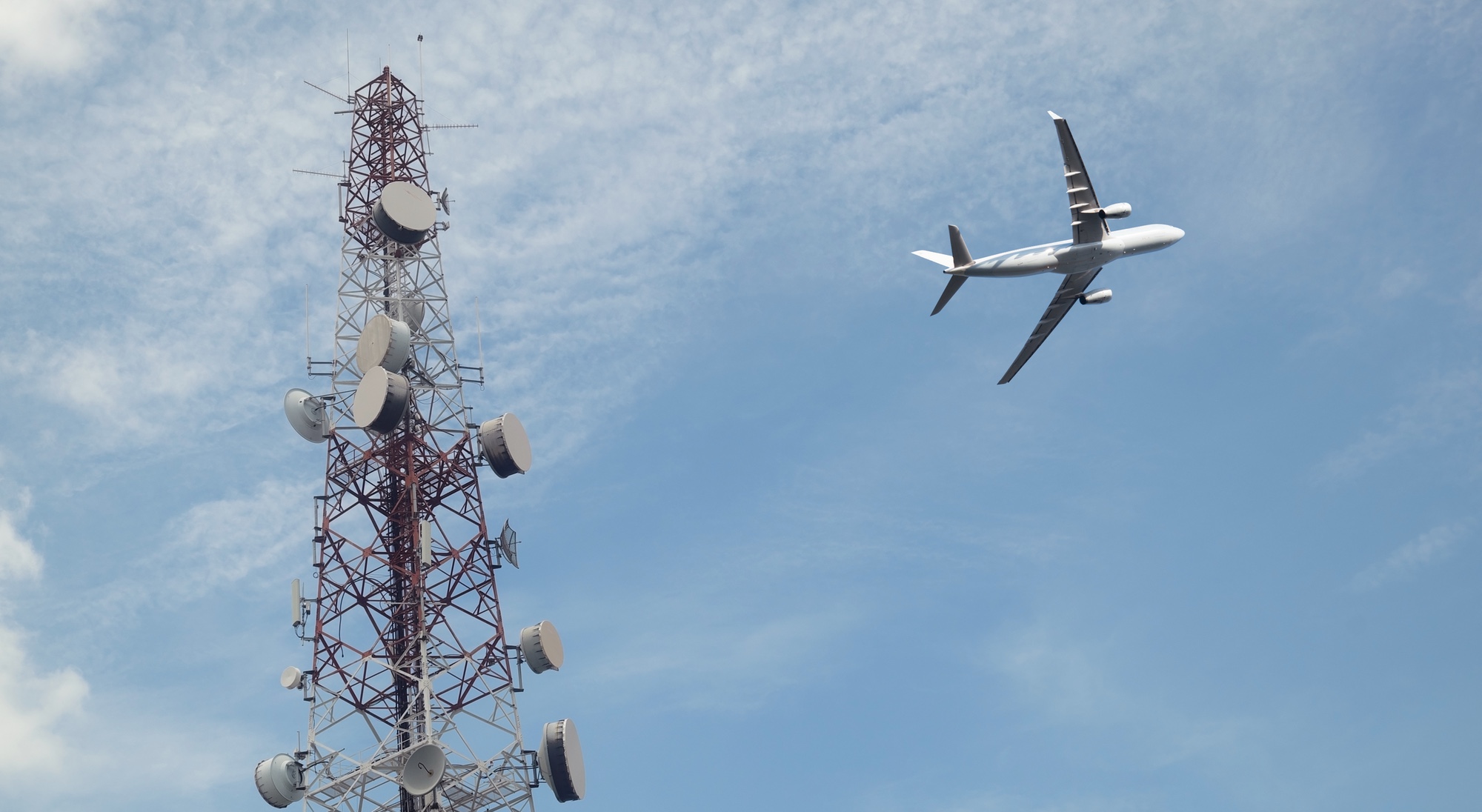AT&T and Verizon limiting 5G C-Band launch in response to airlines outcry

Update: Fears of 5G interference has led to a cascade of U.S. flight delays and cancellations.
AT&T and Verizon plan to flip the switch on their new 5G networks using C-Band spectrum this week. But when the faster, more extensive service goes live, it won't be reaching cellular towers near some airports.
That's because major airlines continue to sound the alarm about C-Band 5G, with the aviation and communications industries at loggerheads about the safety of the new network.
The war of words heated up Monday (January 17) when 10 airline CEOs sent a letter to the Federal Aviation Administration, Federal Communications Commission, U.S. Transportation Secretary Pete Buttigieg and National Economic Council Director Brian Deese warning that the launch of 5G near airports could cause major flight disruptions.
"Unless our major hubs are cleared to fly, the vast majority of the traveling and shipping public will essentially be grounded," the letter posted at the Airlines for America website reads. "This means that on a day like yesterday, more than 1,100 flights and 100,000 passengers would be subjected to cancellations, diversions or delays."
Essentially, airlines fear that 5G signals in the C-Band spectrum will interfere with altimeters on planes and could make it difficult, if not impossible, to land planes in low visibility. Wireless carriers and the FCC have dismissed those criticisms, noting that C-Band spectrum has been deployed in other countries with no such disruptions.
Nevertheless, AT&T and Verizon both announced today (January 18) that they would refrain from launching C-Band-based 5G near certain airports, even as the network comes online in other parts of the country this week.
Get instant access to breaking news, the hottest reviews, great deals and helpful tips.
"As the nation’s leading wireless provider, we have voluntarily decided to limit our 5G network around airports," Verizon announced in its statement. "The Federal Aviation Administration (FAA) and our nation’s airlines have not been able to fully resolve navigating 5G around airports, despite it being safe and fully operational in more than 40 other countries."
We are frustrated by the FAA’s inability to do what nearly 40 countries have done, which is to safely deploy 5G technology without disrupting aviation services, and we urge it do so in a timely manner.
— AT&T spokesperson
AT&T made a similar announcement earlier today. "At our sole discretion we have voluntarily agreed to temporarily defer turning on a limited number of towers around certain airport runways as we continue to work with the aviation industry and the FAA to provide further information about our 5G deployment, since they have not utilized the two years they’ve had to responsibly plan for this deployment," an AT&T spokesperson said. "We are frustrated by the FAA’s inability to do what nearly 40 countries have done, which is to safely deploy 5G technology without disrupting aviation services, and we urge it do so in a timely manner."
To provide some context on what the AT&T and Verizon announcements mean for the C-Band rollout, when Verizon announced plans earlier this month to launch its updated Ultra Wideband network, it said the service would reach 100 million people. In today's statement, this week's launch has scaled back the reach of Verizon's Ultra Wideband network to 90 million people.
AT&T and Verizon both bought significant chunks of C-Band spectrum in an FCC auction last year, with Verizon getting the larger chunk. C-Band will not only enable faster download speeds, but it will have a farther reach than the millimeter wave-based technology that previously delivered top 5G speeds.
Last month, at a Verizon test site in Los Angeles, I saw speeds top 1 Gbps on a C-Band based network. More impressively, those speeds were possible even though I wasn't in the immediate vicinity of a Verizon tower, as had been necessary with mmWave 5G.
AT&T and Verizon already delayed launches of C-Band 5G last year, and pushed back the launches again two weeks ago to address aviation industry concerns. That bring us to this week when it appears that the upgraded 5G networks will go live, albeit not in every area that AT&T and Verizon were planning.
"Carriers are going to turn on the frequencies with buffer zones around airports, and then we’ll see if the FAA actually mandates anything in terms of flight restrictions," said Avi Greengart, lead analyst with Techsponential.
Philip Michaels is a Managing Editor at Tom's Guide. He's been covering personal technology since 1999 and was in the building when Steve Jobs showed off the iPhone for the first time. He's been evaluating smartphones since that first iPhone debuted in 2007, and he's been following phone carriers and smartphone plans since 2015. He has strong opinions about Apple, the Oakland Athletics, old movies and proper butchery techniques. Follow him at @PhilipMichaels.

